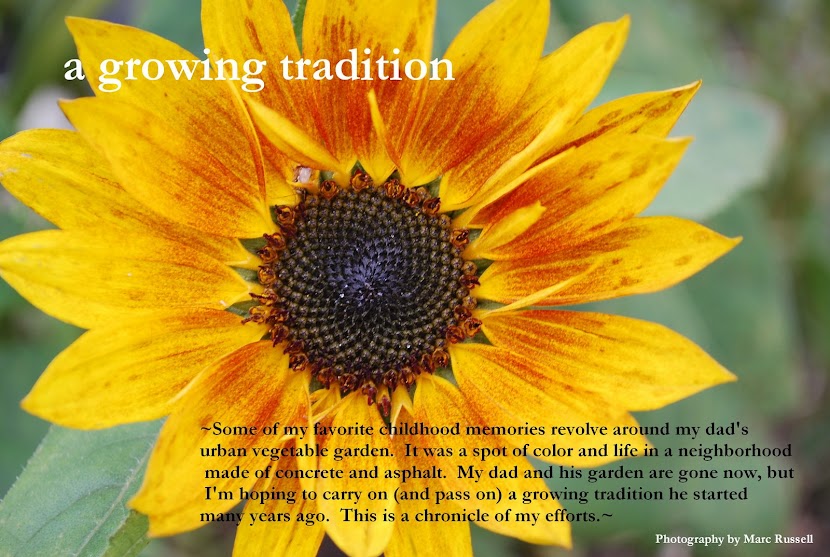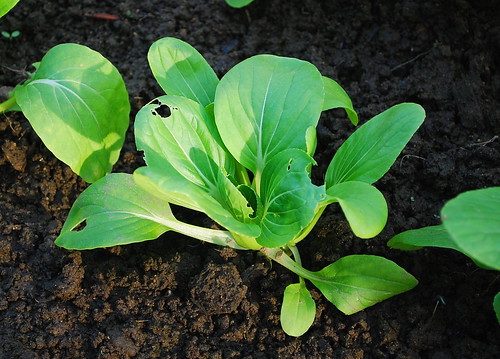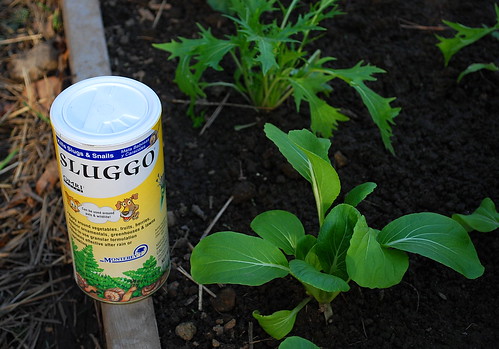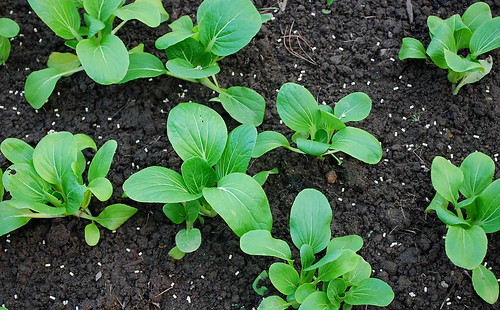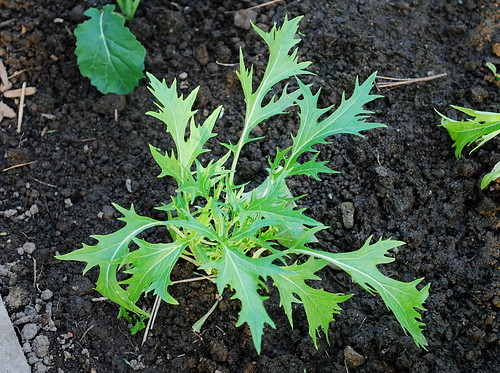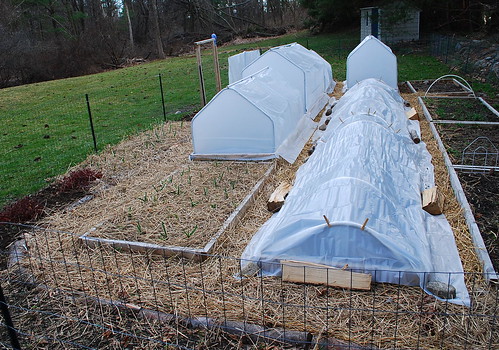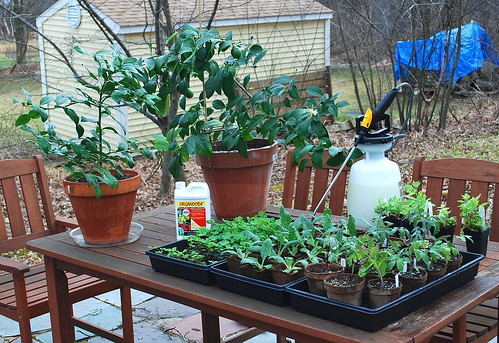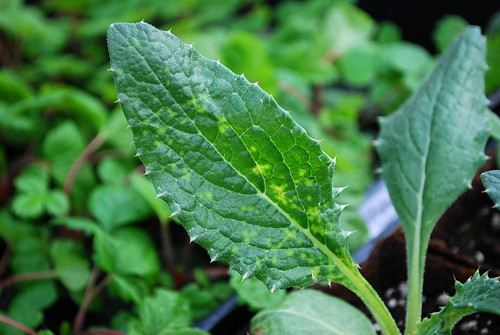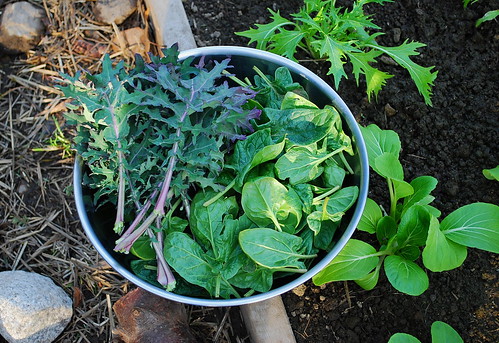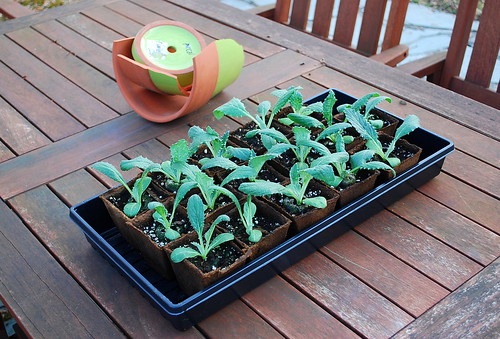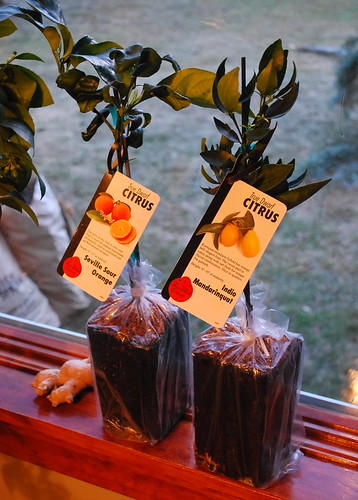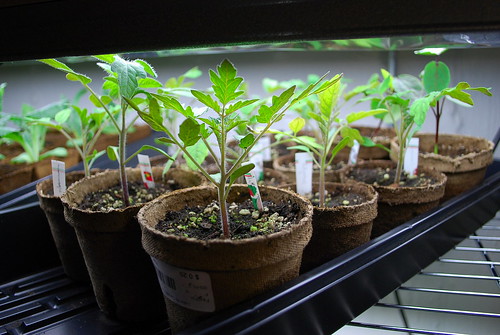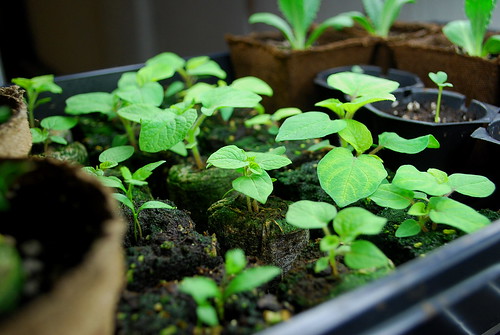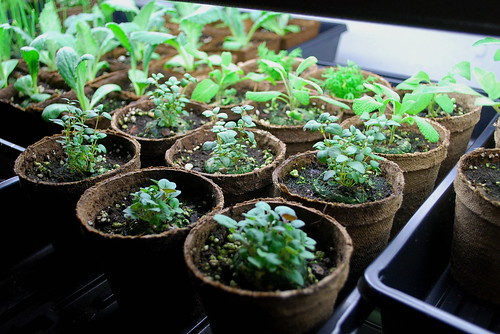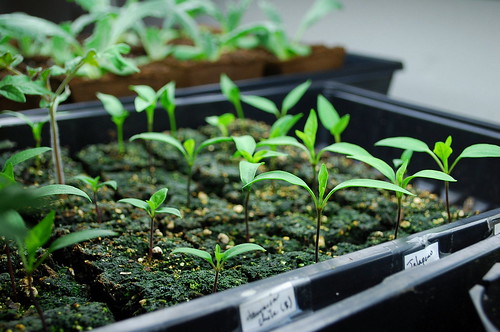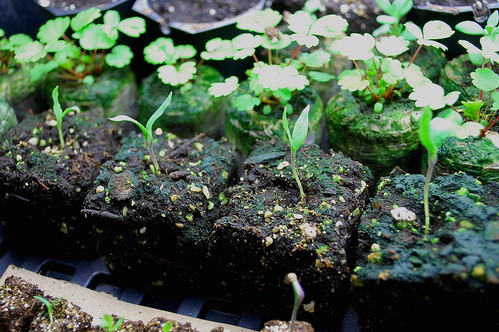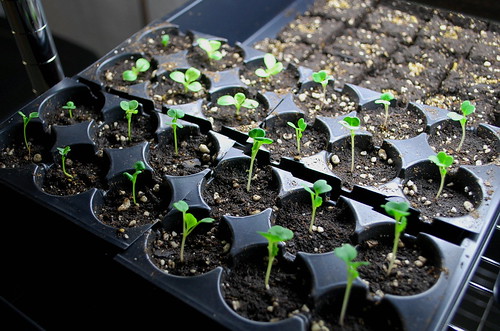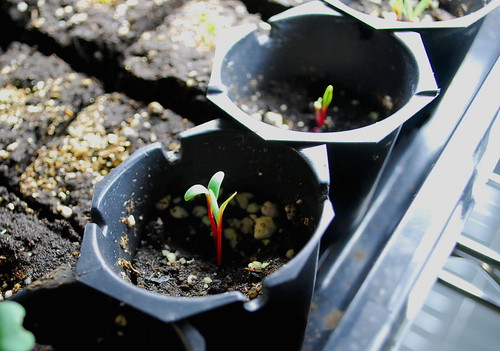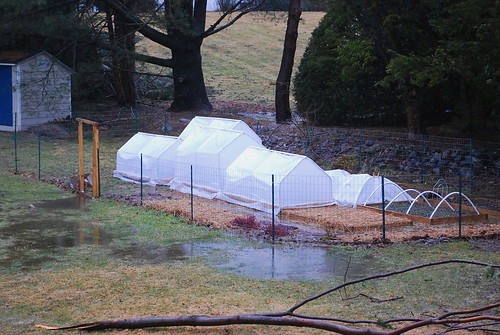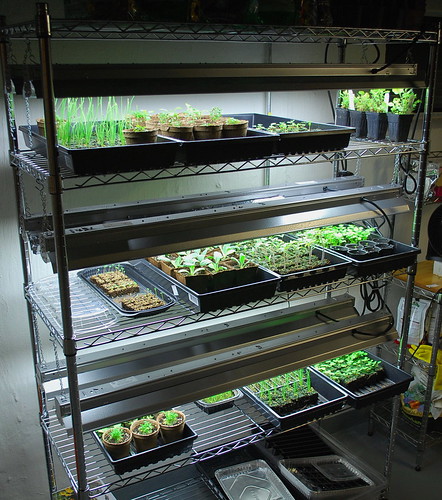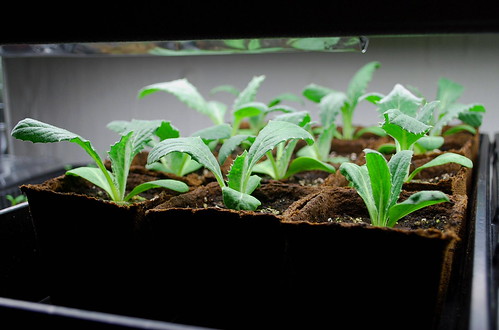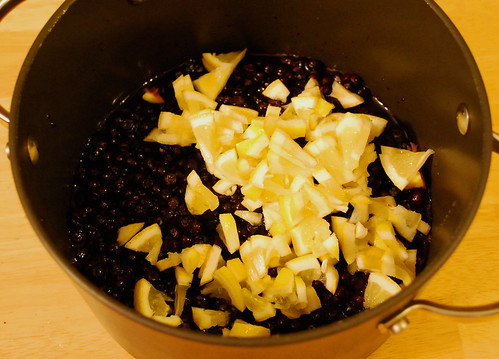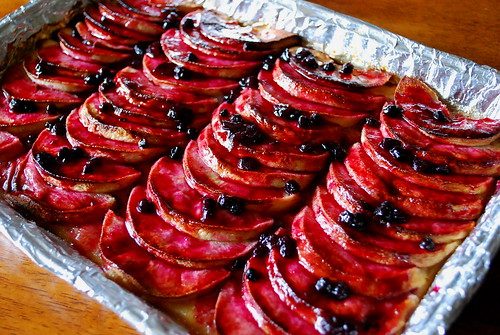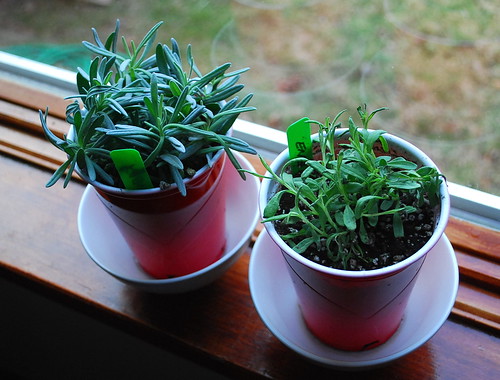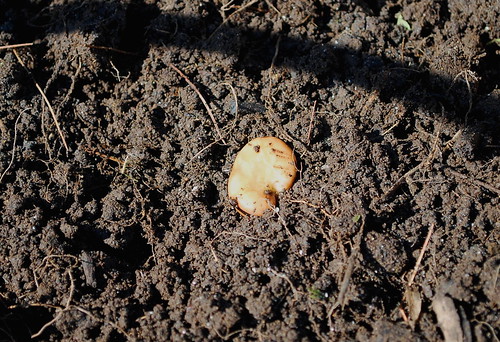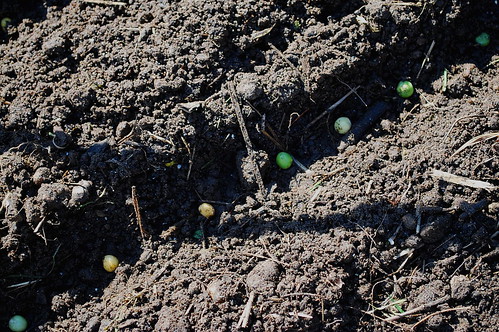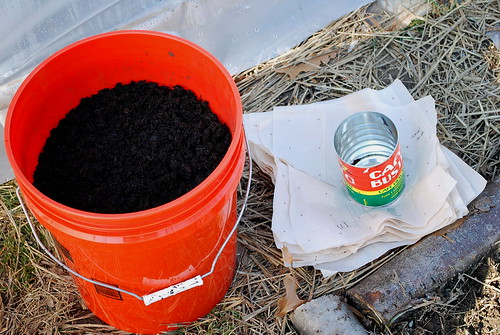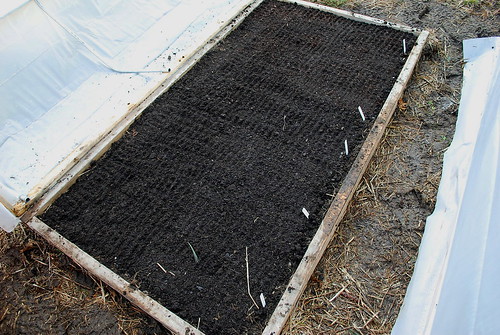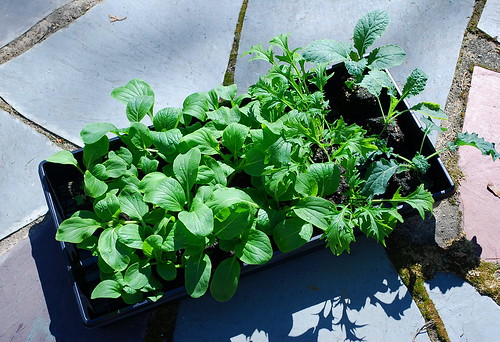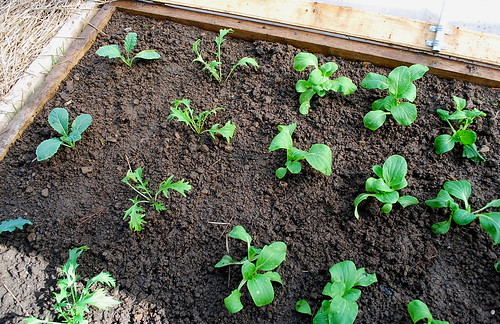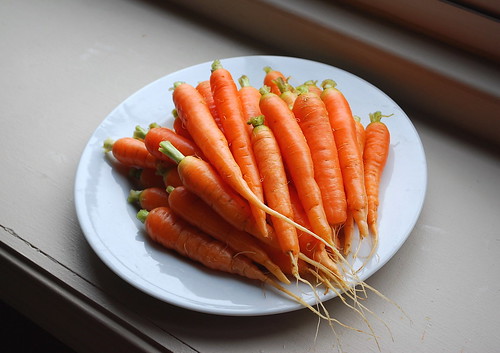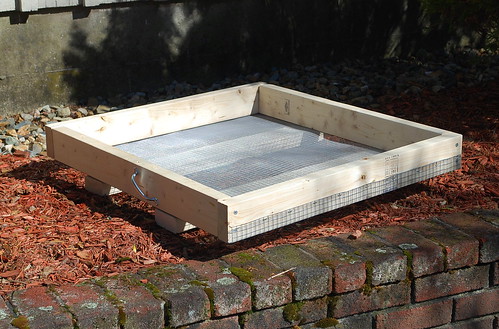
I first came across the concept of salad boxes and tables while watching the PBS show,
Cultivating Life. The idea behind them is pretty start forward - many salad crops have shallow root systems and therefore only require 3 to 4 inches of soil medium in order to grow. Building a salad box or table made out of 2 x 4's enables you to harvest fresh greens right at your doorstep or even on small balcony. As a result, they are ideal for urban areas and for gardeners with limited amounts of growing space. Since they are movable, salad boxes and tables also allow you to extend your growing season. Finally, I think they would look quite attractive in any kitchen garden.
Here are the materials I used to construct a large salad box:
6 - 2 x 4 x 30 inch pieces of pine
16 - 3 inch galvanized screws
1 - 30 x 36 inch piece of aluminum screen
1 - 30 x 36 inch piece of hardware cloth (with 1/2 inch mesh)
2 - galvanized door pull/handle
4 - 1 inch galvanized screws
staple gun and staples
(Note: Since I wanted to build two of these boxes, I purchased three 2" x 4" x 12' lumber and asked the sales attendant to cut them down to twelve 30" lengths.)
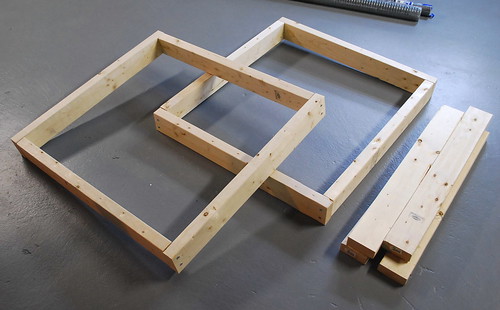
1. Start by constructing the frame. Screw together four of the 2 x 4's (using two 3-inch screws at each corner) to build frame measuring 30 x 34 inches.
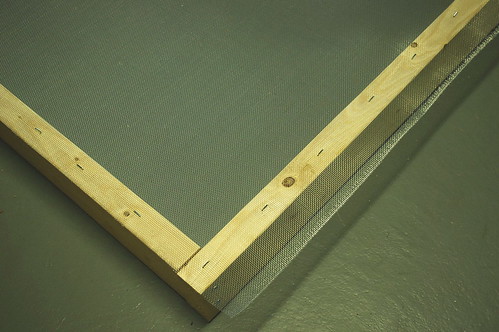
2. Attach the aluminum screen to the frame using a staple gun. The side of the screen measuring 36 inches should be placed on top of the side of the frame measuring 34 inches, leaving about an inch of overhang on each side. Start by stapling the corners and then at the center of each side, lightly stretching the screen taut as you do so. Then place a staple every 4 inches or so along the frame.
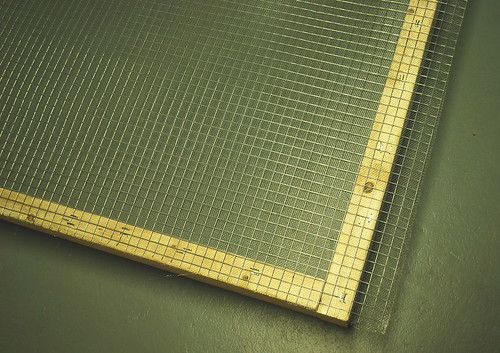
3. Place the hardware cloth on top of the screen and repeat step 2. The hardware cloth adds stretch and rigidity to the bottom of the salad box.
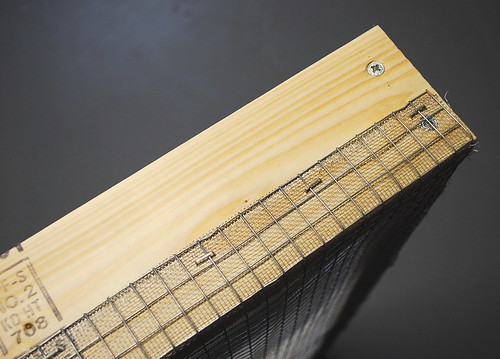
4. Fold and staple the excess screen and hardware cloth onto the sides of the frame.
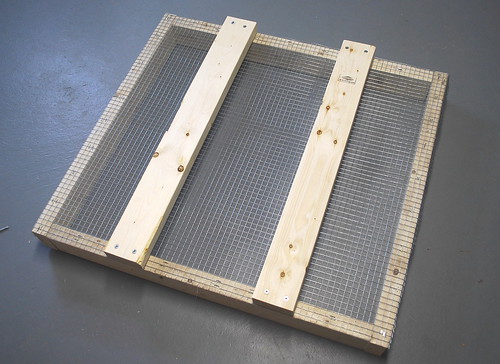
5. Place the two remaining 2 x 4's on top of the hardware cloth (positioning them about 8 inches from each side) and attach them using the remaining 3-inch screws. These will serve as the legs of the salad box and add greater stability to the frame.
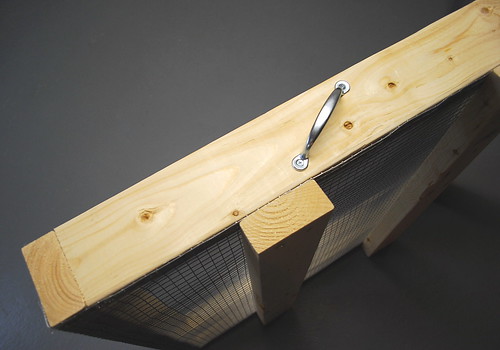
6. Attach the handles to opposite sides of the box. I placed mine about 14 inches from one end and at a slight angle simply because this felt most comfortable for me. Imagine that you are carrying a rather large laundry basket with your arms stretched out and one side of the basket resting against your lower abdomen as you walk. Ideally, you want to attach the handles to where you imagine your hands would grasp the frame in this position.

And there you have it. Pretty simple, right? The box offers about 30 x 26 inches of growing space. I can probably manage moving this box (soil and all) by myself but some of you may want to build a box half this size. This year, I intend to grow all of my baby leaf salad greens in these boxes as well as some mini-heads of lettuce and certain varieties of Asian greens (like Bonsai pak choi, tatsoi and mizuna).
If you'd like more information on salad boxes and tables, including other building designs, what soil mix to use and what greens to grow, visit the following links:
Martha Stewart's WebsiteCollege of Agriculture & Natural ResourcesUniversity of Maryland


